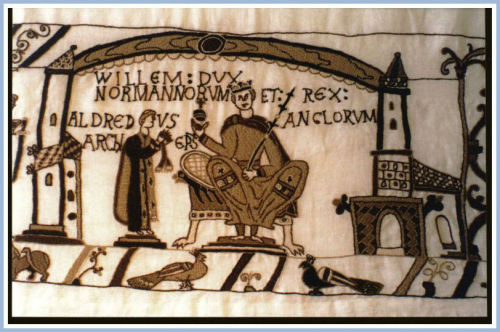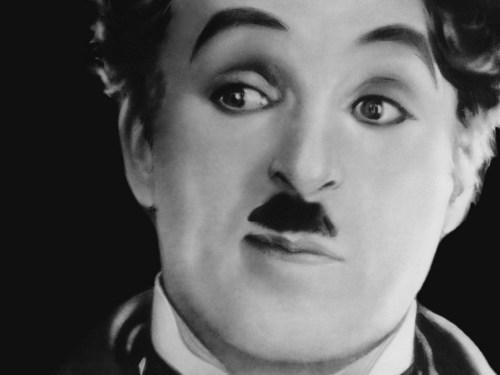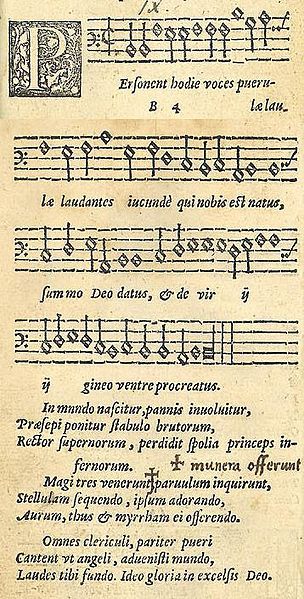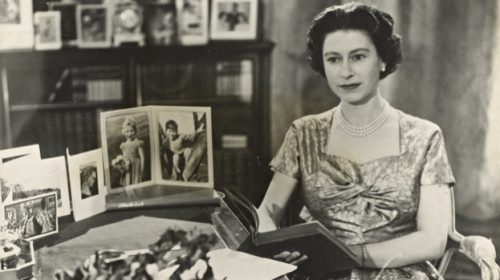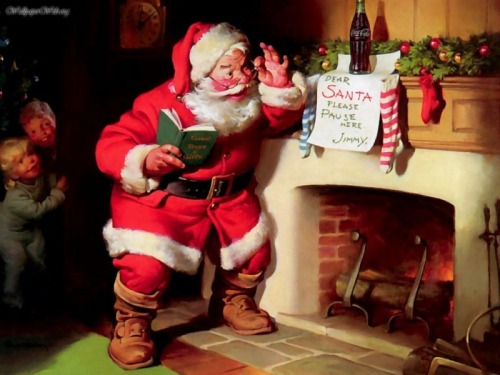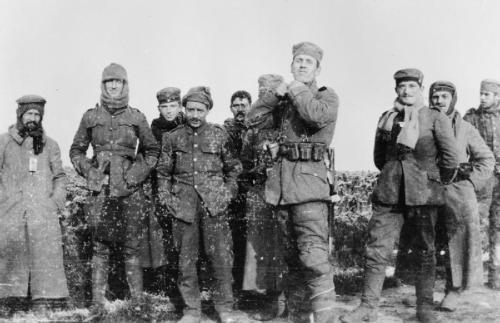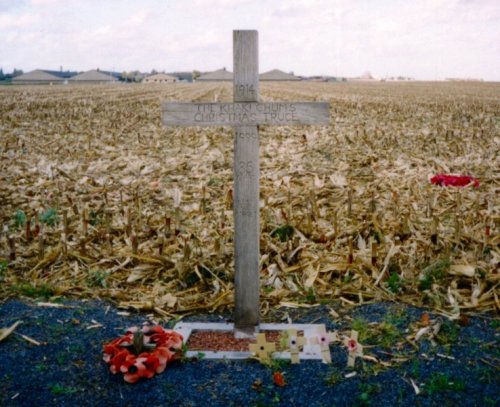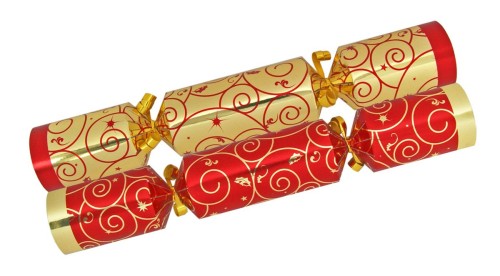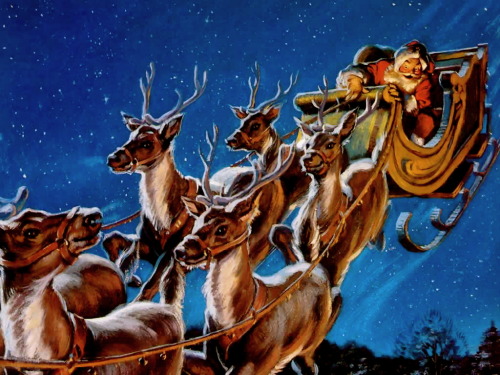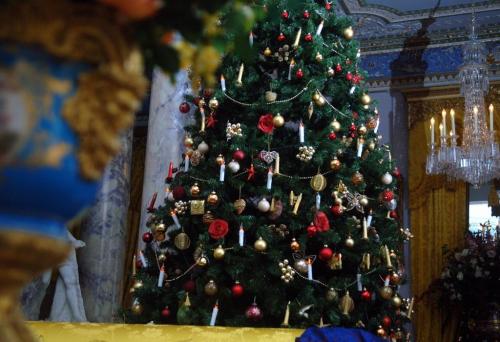#historical advent calendar
Christmas Day 1066
It was on Christmas Day 1066 that William the Conqueror was crowned at Westminster Abbey, to swiftly consolidate his position as King of England, after his invasion in September of 1066.
Post link
A History of Tinsel
Tinsel, although commonly believed to be a modern invention, was actually invented in Nuremberg in 1610. Originally tinsel was made from strands of silver and used to decorate statues and not Christmas trees. It was then added to trees to make them sparkle more, with the light from the trees candles flickering off the silver. In the 20th Century, tinsel was beginning to be made out of cheaper aluminium, with France leading the production. However tinsel production was halted for the First World War. Tinsel became particularly popular in the 1950’s, substituting Christmas lights on the highly flammable artificial trees of the time. Lead foil was also used to make tinsel for a time, but this practice was stopped in the 1960’s, due to a worry of lead poisoning. Today, tinsel is made of PVC coated in a metallic covering and is widely used.
Post link
A Brief History of Christmas Cards
The Christmas card industry was started in Britain in 1843, three years after the Penny Post had been introduced. The first Christmas card was of a family drinking wine together. The early Christmas cards did not focus on Christmas, instead they largely featured pictures of fairies and flowers or children and animals. Cards began to be produced in America in 1875. Official Christmas cards for the British Royal Family were started with Queen Victoria in the 1840’s but it wasn’t until 1953 when the White House followed suit. Christmas cards served an extra purpose during the World Wars, as they became patriotic. The cards have changed over the years, to become more Christmas oriented and even humorous. Whilst Christmas cards still make a large profit for the card industry, the number of cards sent has decreased with the rise of the internet and better social connections.
Post link
Queen’s Christmas Message 1992 - The year of her Annus Horribilis
The Christmas Message 1957
This was the first televised Christmas Message and as such is particularly interesting.
The Impact of A Christmas Carol
A Christmas Carol was written by Charles Dickens and released in December 1843. It reflects his personal views about giving charity to the poor and his troubled childhood. The story has had a massive impact on Christmas, particularly in Britain. The celebrations of Christmas had dwindled over the years and by the Victorian period, many traditions had been lost. An interest in old traditions, Dickens’ A Christmas Carol and new traditions such as the Christmas tree and cards, all led to making Christmas important again, as well as shaping many traditions we follow today.Christmas had previously been more focused on more solemn aspects related to the Church. It is thought that many modern traditions come from A Christmas Carol, such as family gatherings, Christmas food and drink and the idea of a festive spirit. Language too, has been affected by the novella, with Merry Christmas being popularised as well as Scrooge and Bah Humbug becoming part of the vernacular.
Post link
Christmas Deaths
Charlie Chaplin, the famous silent movie star whose first movie was released in 1914, died on 25th December 1977, aged 88.
Post link
The History of Turkey at Christmas
Christmas dinner varies from country to country, dependent on culture and tradition and has evolved over years. In Britain the traditional main food is turkey, or some other kind of poultry such as chicken or capon. In medieval England, the main course was boar or peacock. Turkey was not brought to England until the 1520’s, where it immediately became popular with the upper classes, due to its size, taste and the amount of meat on the bird. Other large birds such as swans were seen as attractive centerpieces to a meal, but were not considered the tastiest meat. Eating turkey at Christmas did not become widespread in the country immediately, because of the high price of the bird. Due to this issue, goose was preferred until the Victorian era, with the price not making turkey available as a widespread Christmas meat until the 1950’s. However turkey was long associated as a part of the Christmas feast for the upper classes.
Post link
Christmas Births
Sir Issac Newton, famous scientist and mathematician, was born on, what was at the time, Christmas Day 1642.
Post link
A Brief History of Christmas Carols
The first Christmas related hymns were sang in fourth century Rome and in Latin. The carol as it is recognised today, was first introduced around the 12th Century and became popularised in the 13th, with the words of ‘O come all ye faithful’, possibly originating at this time. The music from carols often dates to the medieval period, or are later based upon medieval music. An example of this is The Holly and The Ivy, which comes from a medieval composition. Christmas carols in the English language are first recorded in 1426, in a list of 25 carols that would be sang by ‘wassaliers’, who would travel from house to house. Carols were sang by people in gatherings at this time, only later were they sang in church. The Reformation helped to spread the popularity of carols, as music was widely encouraged in Protestantism. The picture above shows a popular Latin carol of that time. Many of today’s widely recognised Christmas carols originate in the 19th Century, with Good King Wenceslas, I Saw Three Ships, The First Noel and Hark! The Herald Angels Sing all coming from this time.
Post link
Royal Christmas Message
The Royal Christmas Message, which depending on the monarch is either called the Kings Christmas Message or the Queens Christmas Message, is a tradition started by George V in 1932. The head of the BBC suggested the idea, to help launch the World Service on the radio, and George V eventually agreed. The first message was heard by around 20 million people across the Commonwealth. George VI carried on the tradition and his daughter, Elizabeth II continues it today. Elizabeth II gave the first televised message in 1957.
The message generally follows a theme and talks about events that have happened in that year, with regards to the Commonwealth, and discusses the monarch’s own personal feelings for the year. There have been several times when the tradition has not gone ahead. One example was due to Edward VIII’s abdication just weeks before Christmas and another was in 1969, when the Queen delivered a written message instead. The message is pre-recorded a couple of days before Christmas and is now aired in the UK at 3 pm on Christmas Day.
Post link
Christmas under Cromwell
After the Reformation, certain Protestant groups, such as Puritans, began to see Christmas is a negative way. It was associated with Catholicism and also with drunkenness and promiscuity. After the Parliamentary forces won the Civil War, Christmas was banned in 1647. People were banned from attended any kind of religious services on Christmas Day and all shops were forced to stay open. There were many protests and riots about this across the country. Canterbury was held by rioters for weeks, who decorated places with holly and sang royalist carols. Many people secretly celebrated Christmas despite the laws and were arrested for these attempts.
Charles II ended the ban when he was restored the throne in 1660 and celebrated the return of Christmas in style, with all old traditions being brought back. This in turn, was viewed with disgust by many Puritans.
Post link
A History of Mistletoe
Mistletoe has been used historically in many ways, with the Celtic Druids considering it a sacred plant. Kissing under the mistletoe was first associated with the winter festival of Saturnalia. It was thought that mistletoe had the power to give fertility and long life to people. By the eighteenth century in England, it was said that a young lady under mistletoe cannot refuse a kiss and that kiss could lead to love or long lasting friendship, but if no one kissed the girl, it was thought she would not marry in the following year. Some people then burned the mistletoe after twelfth night, believing that if left, all the people who had kissed under it would never marry. The custom of kissing under the mistletoe still happens today, although less significance is attached to the idea.
Post link
The Date of Christmas Day
Christmas is now celebrated on the 25th December each year. However this was not always the case. The decision for Christmas celebrations to happen on the 25th December, is something that has happened over time. The actual birth date of Jesus is not referenced in the Bible, although from very early on, it was guessed to be in December some time.
The first recorded time the birth of Jesus was celebrated on 25th December was in 336 AD in Rome, under the Roman Emperor Constantine. In the East, there had long been a tradition of celebrating this on the 6th of January, but soon the 25th December spread as the prevailing tradition. It has been suggested that the 25th was chosen as it was when several sun festivals occurred in Rome, including the Roman winter solstice. The connection of Jesus to the sun comes about because Jesus is referred to as the ‘Sun of righteousness’ in Malachi 4:2. As the date was the same as previous celebrations, it would have helped to encourage more people to celebrate and over time, become more involved in Christianity. Winter was also a time when less work would have been needed to be done in agriculture and so it would have enabled people to celebrate the occasion more easily.
Modern Christmas traditions also come from the other December celebrations, as the occasions were tied together over time, due to similarity of dates. For example, the idea of giving gifts on Christmas is taken from the Roman festival of Saturnalia and lights and charitable acts from the Roman New Year. Yule logs and festive foods were taken from German traditions.
Post link
A Brief History of Santa
Santa Claus, also known as Father Christmas or more traditionally Saint Nicholas, is a character with many different origins, stories and traditions around the world. There are many historical and legendary figures that the modern day Santa is based on. He can be seen as largely a mix of Saint Nicholas, Sinterklaas and Father Christmas. The name Santa Claus for example, is an Americanised version of the Dutch Sinterklaas.
Possibly the earliest of these figures is Saint Nicholas of Myra, who was a 4th Century bishop who was generous with gifts and money, including giving dowries to three woman who otherwise would have had to become prostitutes. Another possible influence on the idea of Santa is the Norse God, Odin. Odin apparently rode through the sky on an eight legged horse and some children left food for the horse out near their chimneys, which Odin would apparently take and replace with sweets for their kindness. The Dutch Sinterklaas is another popular figure, who has a list of good and naughty children and rewards the good children with presents, with his helpers, the Black Peter. Sinterklass is described as riding a horse over rooftops, dropping presents into the chimneys of the well behaved, while the helpers carry sticks and sacks, to catch the naughty children with. The British tradition of Father Christmas dates back to the 15th Century but became popular only in the 17th Century. Father Christmas is shown as a bearded man who wore a green, fur lined robe. He was associated with drinking and adult feasts initially, until the various Santa’s merged, and Santa Claus and Father Christmas became synonyms in Britain.
In the 1800’s, the Santa figure began to evolve into the figure we are familiar with today. He became drawn as a chubbier man who lived at the North Pole, an idea which was popularised by the famous cartoonist Thomas Nast. It is suggested that Nast began to make the idea of a red suited Santa popular in the late 1800’s, although he had appeared in red before this in many depictions. It was the Coca-Cola advertising campaigns in the 1930’s and on that made the image the commercialised success that it is today.
Children today can write letters to Santa that are replied to by volunteers working for the postal services of many countries. Santa can also be ‘tracked’ online, through various websites that show Santa’s progress around the world on Christmas Eve. Other than these technical advances, over the last 200 years, Santa has gained a wife, reindeer and a team of elves who help in his job of delivering presents.
Post link
The Christmas Truce of 1914
In the week before Christmas 1914, the attitude in the trenches was very different to the usual trench misery that is usually associated with the Western Front. There was a series of unofficial ceasefires and occasions of soldiers singing carols across to each other. By Christmas Eve and Christmas Day, soldiers were crossing No Man’s Land to exchange small gifts and food with one another. They also became friendly enough to play football matches with each other. In all, about 100,000 British and German soldiers took part in these unsanctioned truces.
The truce did not take place everywhere on the Front, with some sections still fighting on Christmas Day and others only agreeing to stop fighting to recover the dead, but they were relatively widespread. Some truces lasted until New Years Day, whilst others merely lasted through Christmas night. When the high command of both sides heard about the truces, they prohibited such fraternisation in future. Despite this, some truces took place in 1915, however not nearly as many. There is evidence that the soldiers were unhappy with this ban on truces and many tried to disobey and start football matches and gift swapping once more, but most were ordered back on threat of punishment. There is a record that the German soldiers continued to try and start truces, as the British soldiers were being forced to continue fighting. Adolf Hitler, fighting at this time, was apparently opposed to the truces. With the escalation of violence at the Somme and the use of poison gas in 1916, meant that the truces were mostly over by this Christmas.
Post link
A Brief History of the Christmas Cracker
Christmas Crackers were invented in 1847 by Thomas J Smith. He had produced sweets that were wrapped in paper with twists at either end, in the traditional sweetie style. Thomas wanted to make his sweets more interesting, by adding small love messages. To further increase the sales of his sweets, he came up with the idea of adding a bang to the sweet wrapper. From here the idea developed into the cracker we would recognise today, containing small toys and paper hats instead of sweets. By the end of the century, many other companies were developing their own and the cracker becoming widespread.
Post link
The History of Santa’s Reindeer
The idea of Santa’s sleigh being pulled by a team of reindeer is thought to have originated from the 1823 poem ‘A Visit From St Nicholas’ (also known as The Night Before Christmas), written by Clement C Moore. The reindeer were originally called Dasher, Dancer, Prancer, Vixen, Comet, Cupid, Dunder and Blixem. The last two reindeer names were altered over time and translations to Donner and Blitzen. Many different reindeer have been added over the years, however the only one that has become widely accepted is Rudolph.
Rudolph the Red Nosed Reindeer was first introduced in 1939, by Robert L May. The character was created for the retailer Montgomery Ward, who had been buying colouring books and selling them for Christmas. It was decided that, to save money, they would create their own book and so the story of Rudolph was created. The story was written as a poem, with a similar style to the Visit From St Nicholas poem that had inspired the original reindeer.
There have been many stories and films since their creation that have involved the reindeer team that pull Santa’s sleigh, including L Frank Baum’s ‘The Life and Adventures of Santa Claus’, which listed ten entirely different reindeer. Other alternative reindeer include Robbie, Rusty, Ralph, Leroy and Olive, who was actually a dog, who have featured in various books and films over the last 80 years.
Post link
Places to Visit - Christmas - Osborne House
Osborne House was bought by Queen Victoria and Prince Albert and was redesinged by Prince Albert between 1845 and 1851. For December and the Christmas period, Osborne House creates the experience of a traditional Victorian Christmas, with the rooms being festively decorated. There are games and Victorian carols, as well theatre performances of Christmas stories. There’s also a traditional Father Christmas and Queen Victoria to meet.
Post link
A Brief History of Christmas Puddings
Christmas Puddings are traditionally a kind of plum or raisin pudding, and have been eaten at Christmas since the medieval period, from around the 1420’s. The puddings have varied over time, with different ingredients used and the current version was only settled upon in the Victorian era. Since then it has contained fruits and sugar and spices amongst other things. The Christmas pudding became massively popular in the 1700’s, when George I requested it be served at his Christmas feast.
Post link

